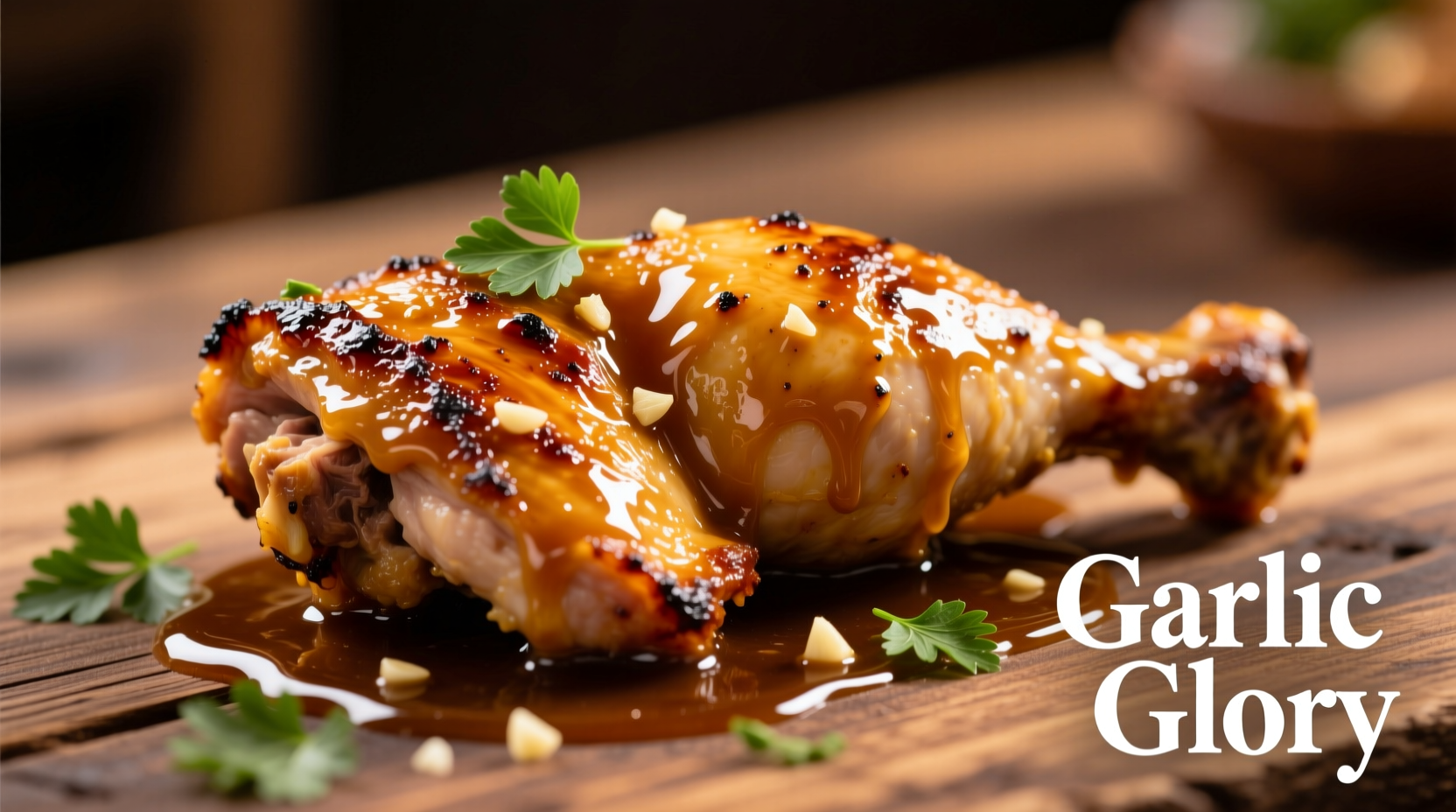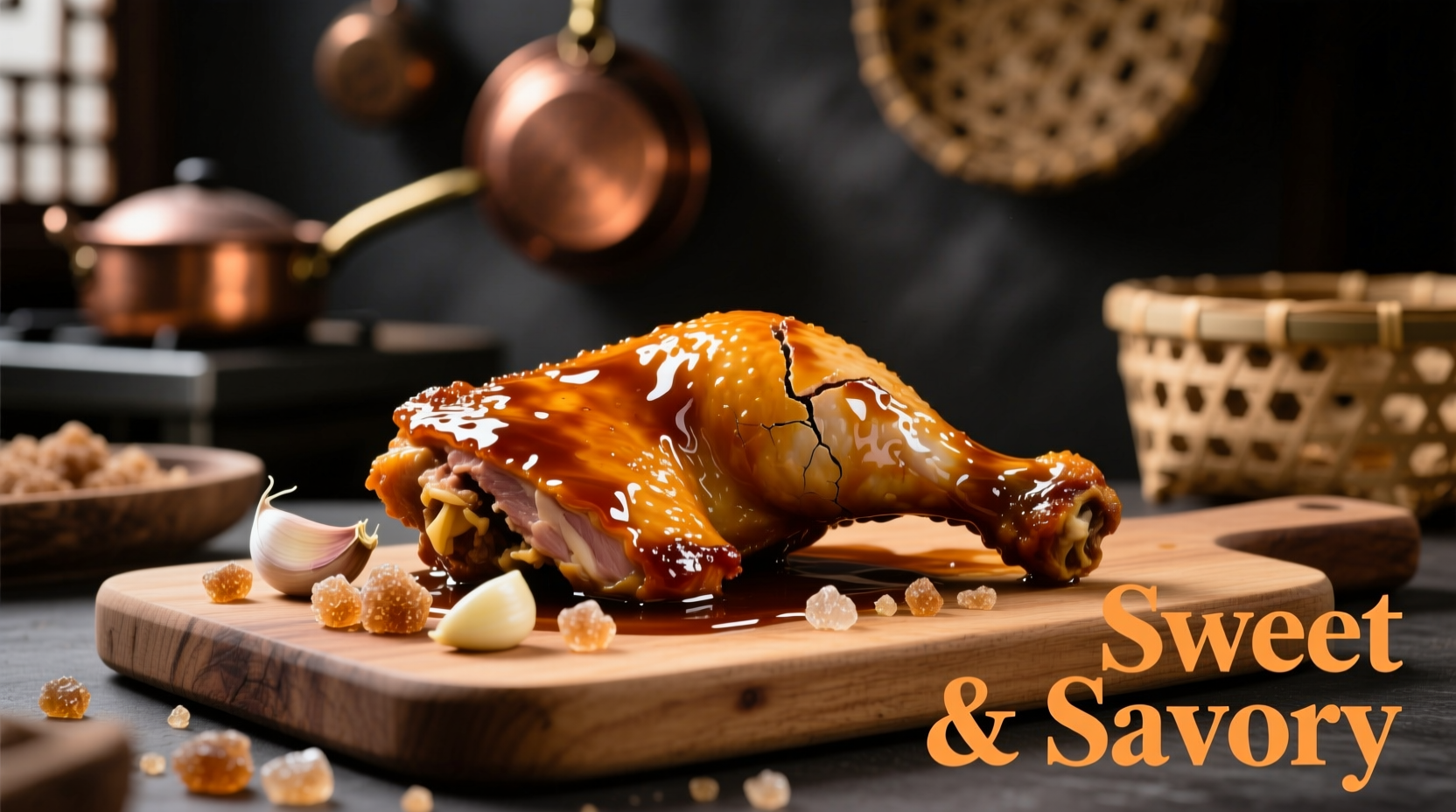Get a perfectly balanced brown sugar garlic chicken recipe with crispy skin, caramelized edges, and restaurant-quality flavor in under 30 minutes. This foolproof method delivers tender, juicy chicken with a sweet-savory glaze that clings beautifully to every piece.
The Ultimate Brown Sugar Garlic Chicken Recipe
When you crave that irresistible combination of sweet and savory with aromatic garlic notes, this brown sugar garlic chicken recipe delivers every time. Unlike many online versions that result in soggy or overly sweet chicken, our tested method creates a beautifully caramelized crust while keeping the interior moist and flavorful.
Why This Recipe Works
Many home cooks struggle with brown sugar garlic chicken because they don't understand the critical balance between caramelization and burning. The secret lies in controlling the sugar's Maillard reaction while properly cooking the chicken. Our method addresses three common pitfalls:
- Preventing sugar burn by controlling heat levels
- Ensuring garlic infuses flavor without becoming bitter
- Maintaining chicken moisture while achieving crispy skin
| Common Problem | Our Solution |
|---|---|
| Soggy chicken skin | Dry brine technique + high-heat sear |
| Burnt garlic | Adding garlic at precise temperature threshold |
| Runny sauce | Controlled reduction + cornstarch slurry |
Essential Ingredients and Why They Matter
The magic of brown sugar garlic chicken comes from just a handful of ingredients, each playing a critical role:
- Chicken thighs (bone-in, skin-on) - The fat content keeps the meat moist during cooking. USDA food safety guidelines recommend cooking poultry to 165°F (74°C) internal temperature for safety.
- Dark brown sugar - Contains more molasses than light brown sugar, creating deeper caramel notes. The sugar's hygroscopic nature helps retain moisture in the finished dish.
- Fresh garlic - Provides aromatic compounds that transform when heated. According to research published in the Journal of Agricultural and Food Chemistry, heating garlic releases allicin compounds that create its characteristic flavor.
- Soy sauce - Adds umami depth and helps with browning through its amino acid content.
- Rice vinegar - Balances sweetness with acidity, enhancing overall flavor perception.
Step-by-Step Cooking Process
Preparation (15 minutes)
- Dry brine the chicken: Pat chicken thighs thoroughly dry and sprinkle with 1 teaspoon salt per pound. Refrigerate uncovered for 30-60 minutes. This critical step removes surface moisture for better browning.
- Prepare the glaze: Whisk together 1/4 cup dark brown sugar, 3 tablespoons soy sauce, 2 tablespoons rice vinegar, 1 tablespoon cornstarch, and 1/4 teaspoon black pepper.
- Garlic timing: Mince 6 garlic cloves but keep them separate - you'll add them at different stages for layered flavor.
Cooking (15 minutes)
- Sear the chicken: Heat 1 tablespoon oil in a heavy skillet over medium-high heat. Place chicken skin-side down and cook undisturbed for 6-7 minutes until golden brown and crispy.
- Flip and cook: Turn chicken skin-side up and cook for 3 more minutes. Remove chicken and set aside.
- Build the sauce: Reduce heat to medium. Add 3 minced garlic cloves and cook for 30 seconds until fragrant but not browned.
- Add glaze: Pour in the sauce mixture, stirring constantly until it bubbles and thickens (about 1 minute).
- Finish cooking: Return chicken to the pan, skin-side up. Add remaining 3 garlic cloves. Simmer for 4-5 minutes until chicken reaches 165°F internally and sauce coats the chicken beautifully.

Pro Tips for Perfect Results
- Temperature control: Keep your burner at medium heat when adding the sugar glaze. Too high and it will burn; too low and it won't caramelize properly.
- Garlic timing matters: Adding half the garlic early creates a base flavor, while the second addition at the end provides fresh aromatic notes.
- Don't skip the dry brine: This simple step makes a dramatic difference in achieving crispy skin, as documented in culinary science resources like Harold McGee's "On Food and Cooking".
- Sauce consistency: If your sauce becomes too thick, add 1-2 tablespoons of chicken broth to reach the perfect coating consistency.
Serving Suggestions and Variations
This versatile dish pairs beautifully with:
- Steamed jasmine rice (absorbs the delicious sauce)
- Simple stir-fried vegetables like bok choy or broccoli
- Cucumber salad for refreshing contrast
Variations to try:
- Spicy version: Add 1-2 teaspoons of sriracha or red pepper flakes
- Honey substitution: Replace half the brown sugar with honey for floral notes
- Orange twist: Add 2 tablespoons fresh orange juice to the glaze
- Vegetarian option: Use extra-firm tofu instead of chicken (press thoroughly first)
Storage and Reheating Instructions
Store leftovers in an airtight container in the refrigerator for up to 3 days. For best results when reheating:
- Microwave method: Cover with a damp paper towel and heat at 50% power in 30-second intervals
- Oven method: Place on a baking sheet at 300°F for 10-12 minutes
- Stovetop method: Warm gently in a skillet with a splash of water to revive the sauce
Freezing is not recommended as the sauce texture changes significantly upon thawing.











 浙公网安备
33010002000092号
浙公网安备
33010002000092号 浙B2-20120091-4
浙B2-20120091-4